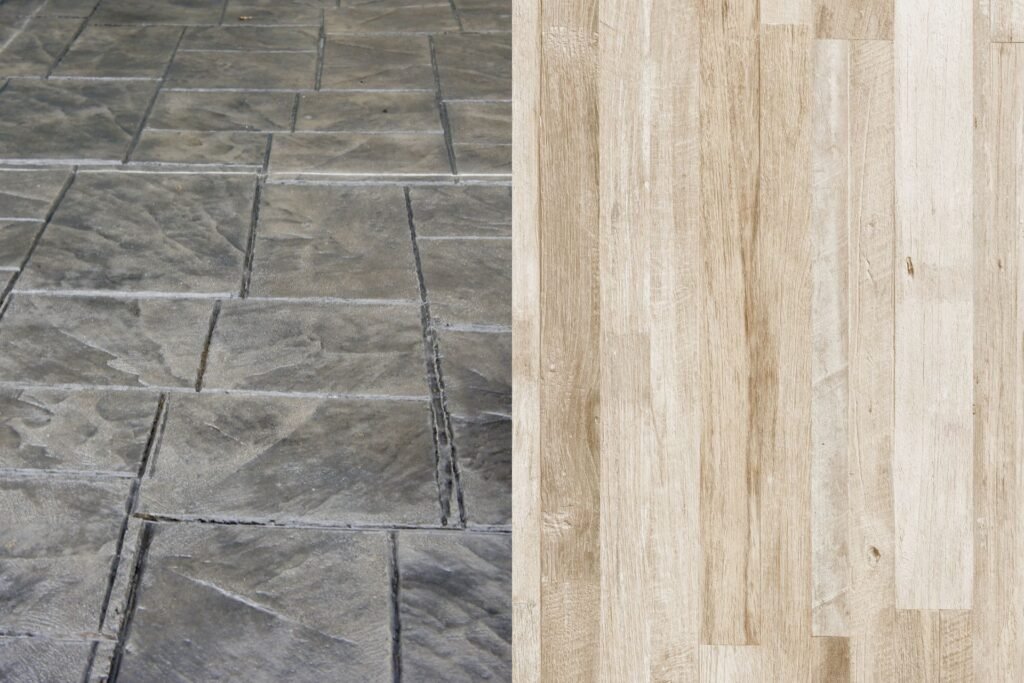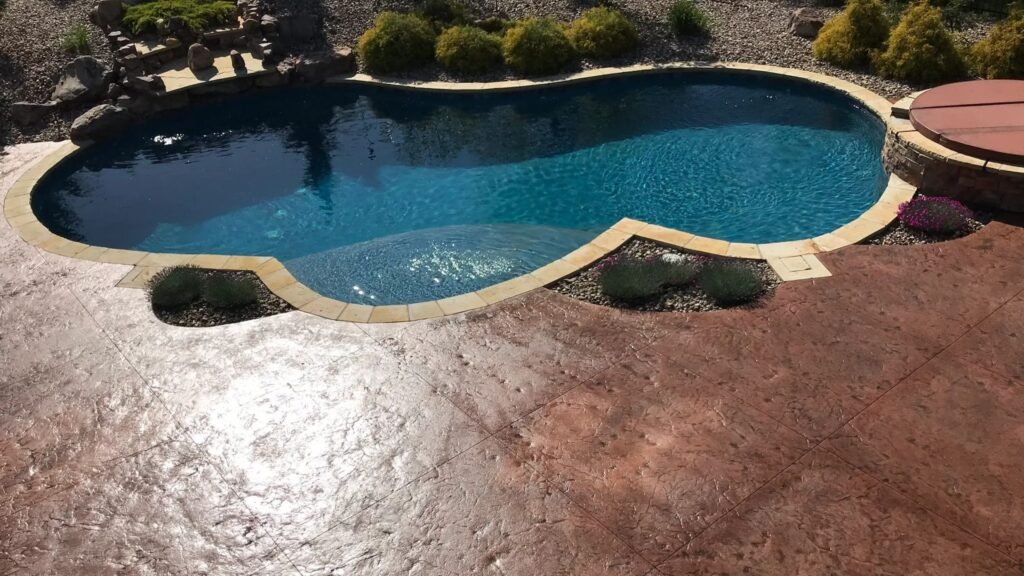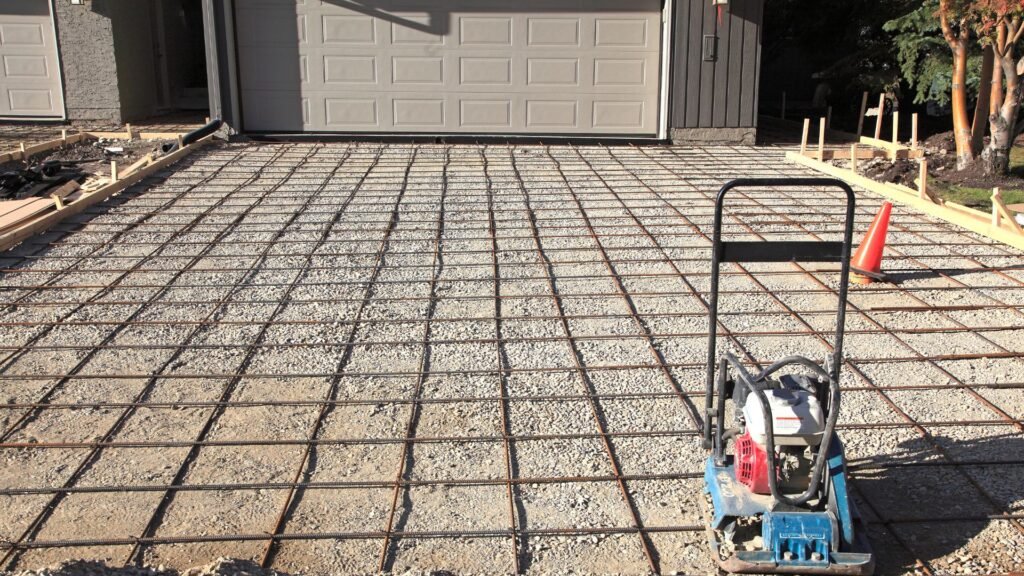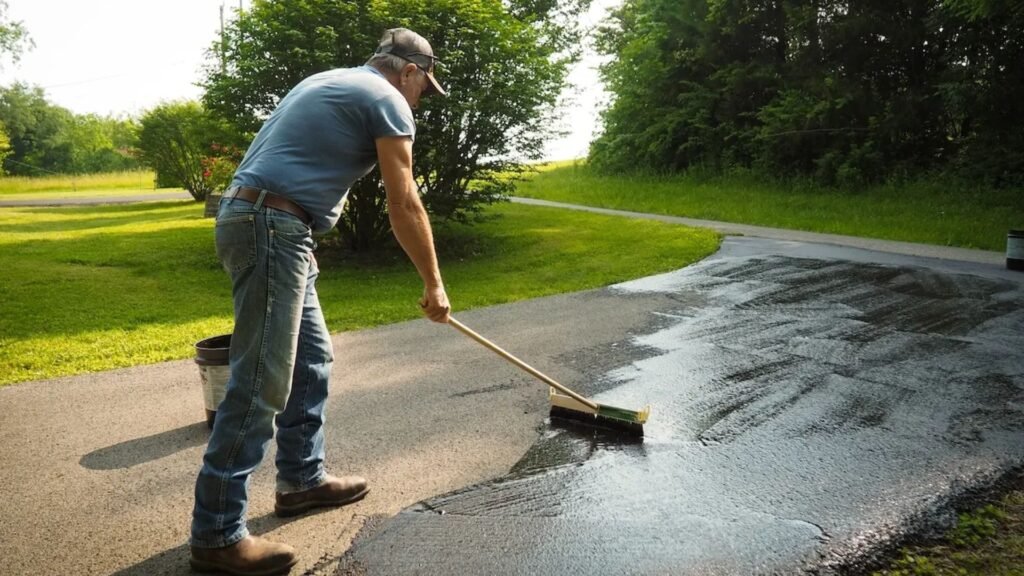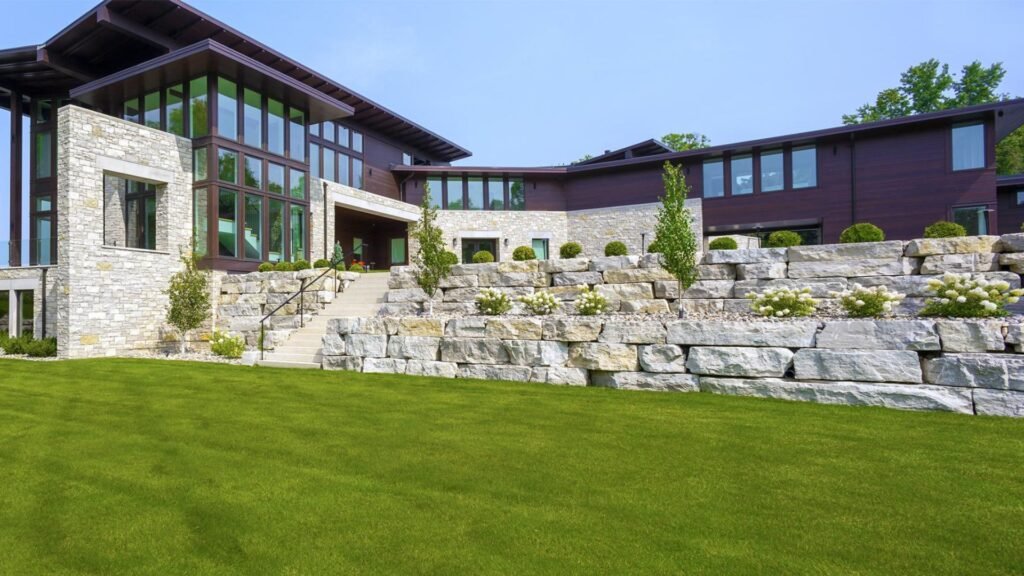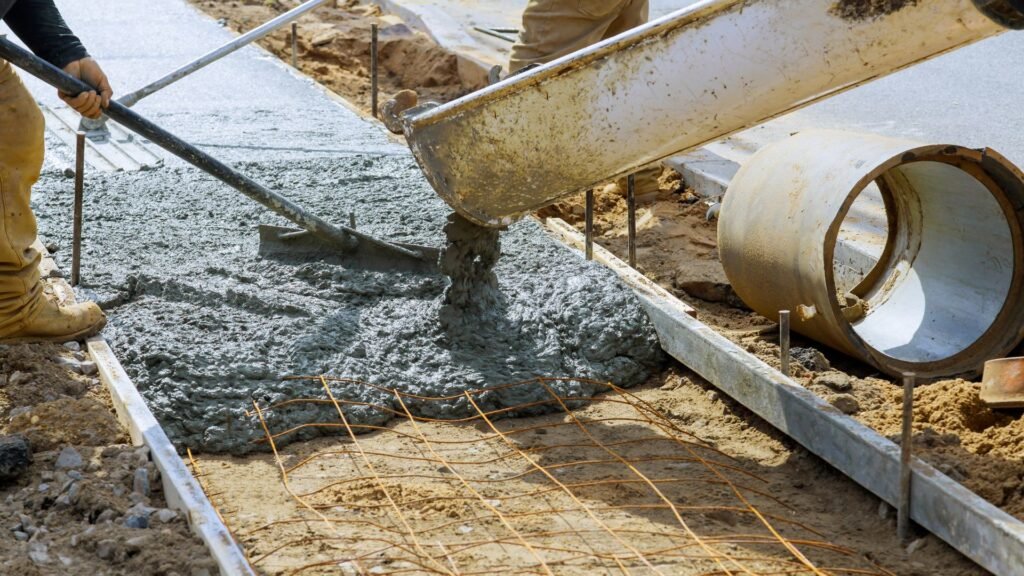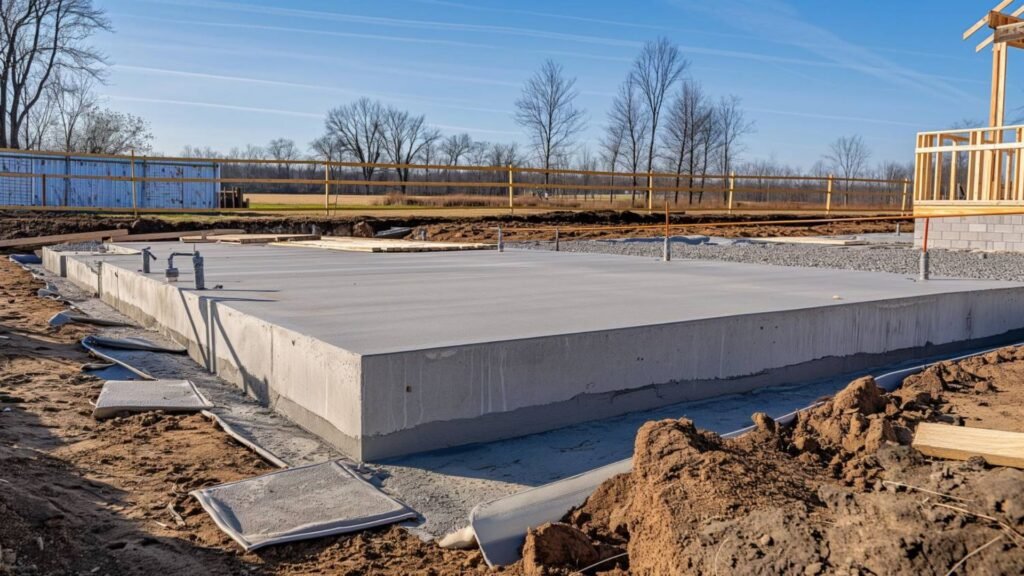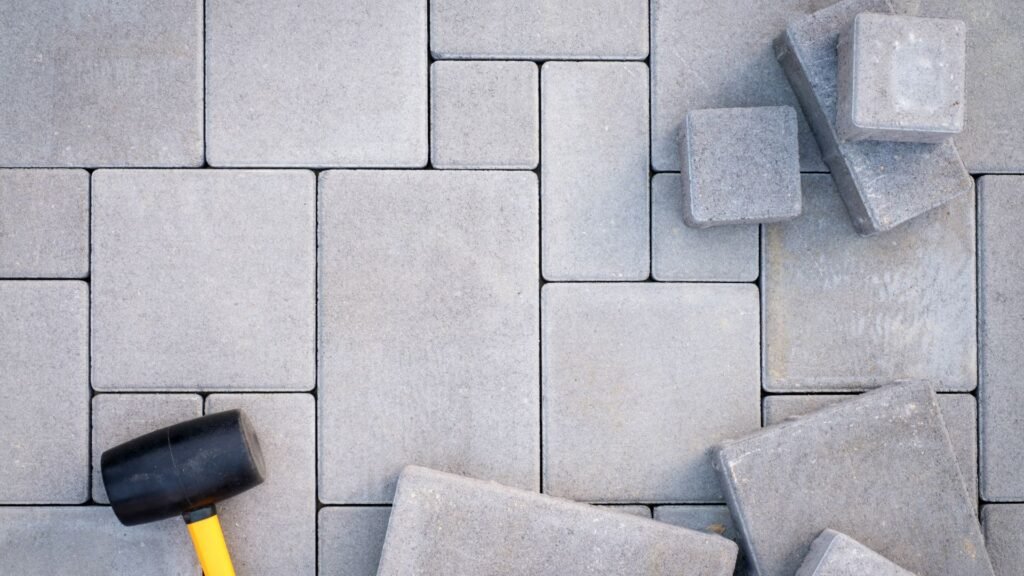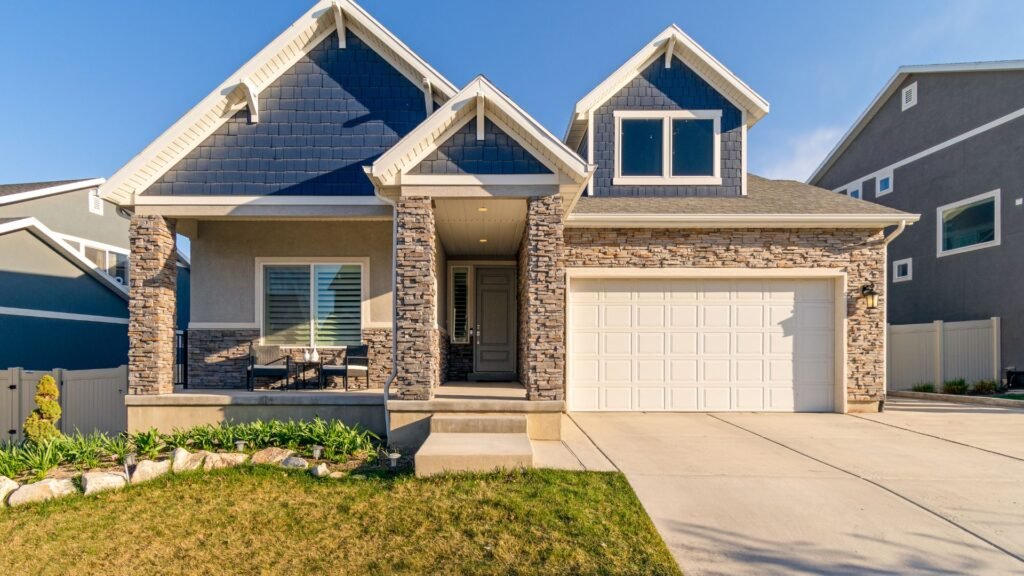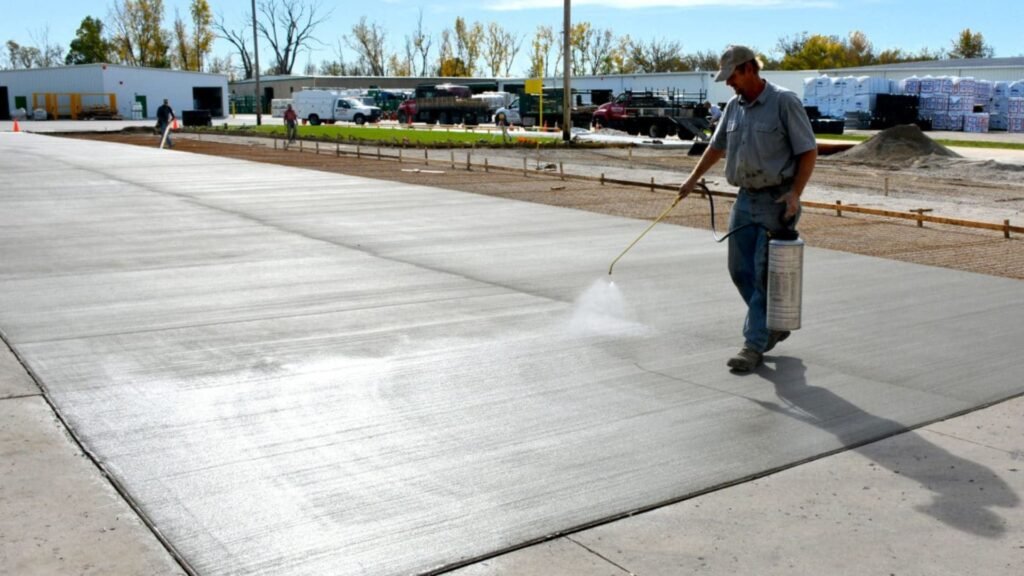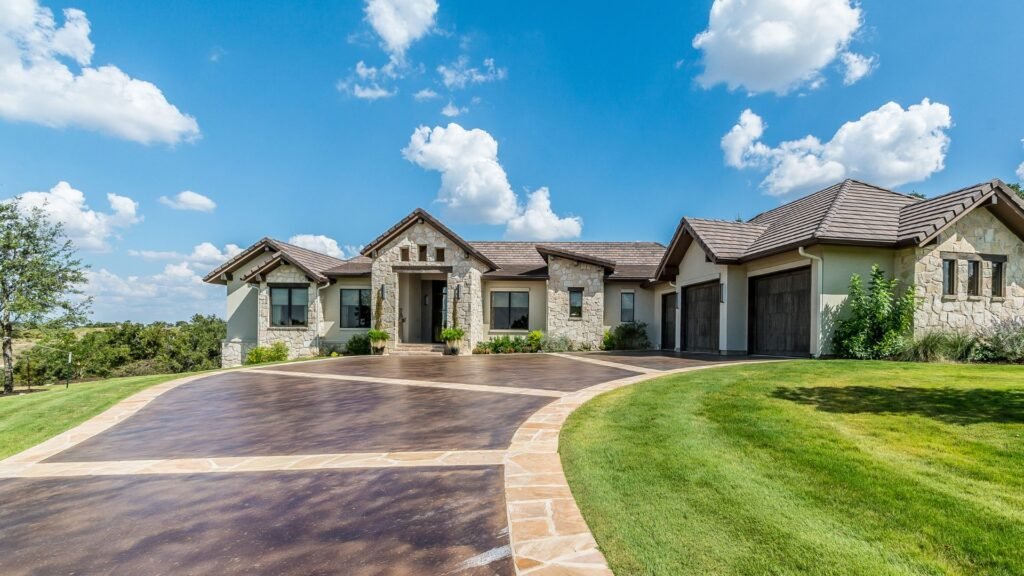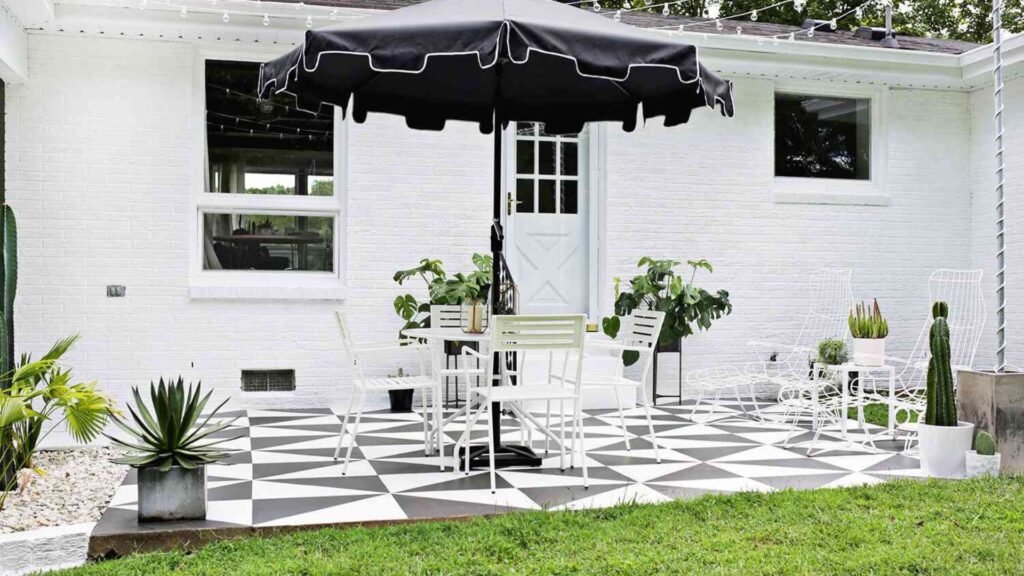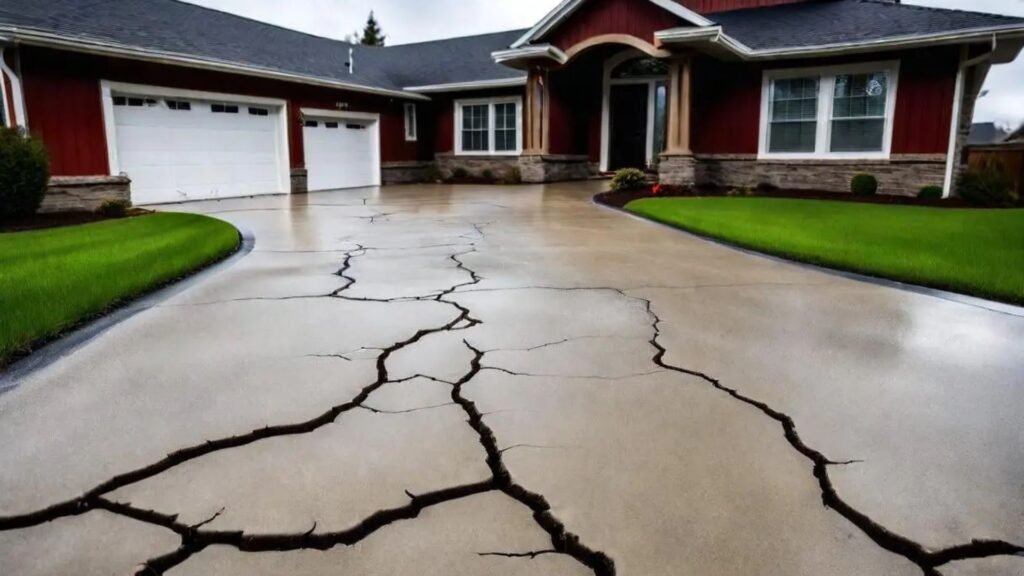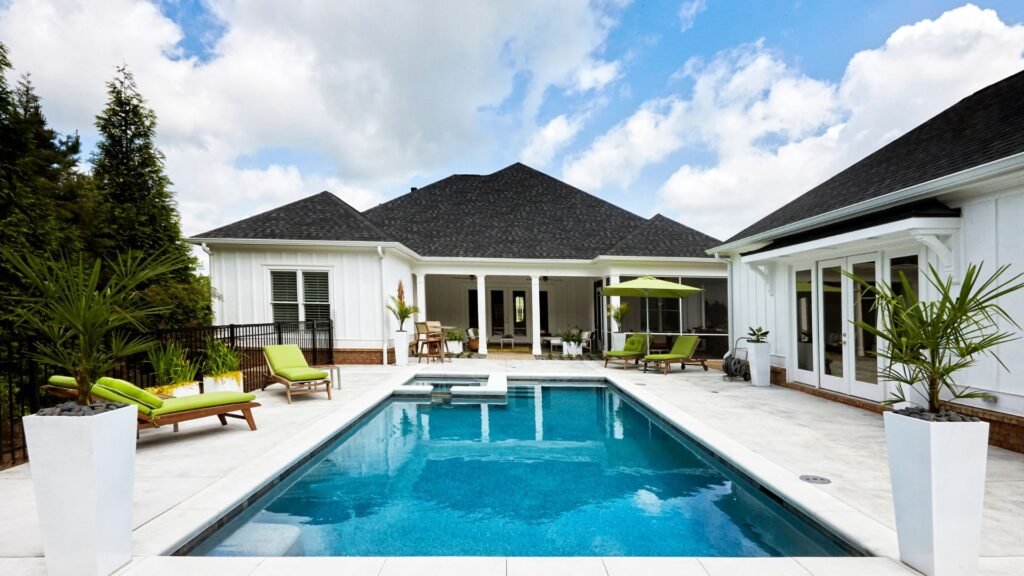Welcome to the ultimate guide for choosing between a concrete slab or timber floor for your New Zealand home! Whether you’re building from scratch or renovating an existing space, selecting the right flooring can make a huge difference in comfort, durability, and style. With so many factors to consider—like cost, maintenance, energy efficiency, and environmental impact—it’s important to weigh the pros and cons of each option. In this post, we’ll explore the benefits and drawbacks of both concrete and timber floors, helping you decide which is the best fit for your unique needs and the NZ climate. Let’s dive in and find out which flooring option suits your home and lifestyle!
Concrete slab floors in NZ are known for their durability, energy efficiency, and low maintenance, making them ideal for modern homes and areas prone to earthquakes. Timber floors, on the other hand, offer warmth, aesthetic appeal, and sustainability, especially with native NZ wood options. While concrete slabs are more resistant to pests and moisture, timber floors provide natural insulation and can be refinished over time. The choice between the two depends on your budget, style preferences, and the local climate.
Table of Contents
Overview Of Concrete Slab And Timber Floor Options In NZ
When building or renovating a home in New Zealand, one of the essential choices involves selecting the type of flooring. Two popular options are concrete slab floors and timber floors, each offering unique benefits depending on the style and needs of your home. Below is a clear comparison of these flooring options, helping homeowners make an informed decision.
What is a Concrete Slab Floor?
A concrete slab floor is a flat, horizontal surface made of poured concrete, typically reinforced with steel. Concrete slab floors are well-known for their strength, durability, and energy efficiency, making them a preferred choice for many modern homes and commercial buildings in New Zealand. These floors are often used in both the foundation of buildings and as the finished surface inside homes.
Due to its durability and ability to store heat (thermal mass), concrete slab floors are increasingly popular in areas prone to earthquakes, as they provide a stable, solid foundation. Additionally, concrete slab floors are low maintenance and can be left exposed or covered with other materials like tiles or carpets, offering flexibility in design.
What is a Timber Floor?
A timber floor consists of wooden planks or boards that form a sturdy, flexible surface. Timber flooring comes in several forms, including solid wood and engineered wood, offering a range of aesthetics and price points. Solid wood floors use single pieces of wood, while engineered wood is made from layers of different materials to enhance durability.
Historically, timber floors have been a staple in New Zealand homes, particularly in older houses, due to their warmth and natural beauty. Today, they remain popular for those looking to add a traditional or natural element to their home interiors. Timber floors can be polished, stained, or finished in various ways, allowing for greater design versatility while being relatively easy to repair or replace if damaged.
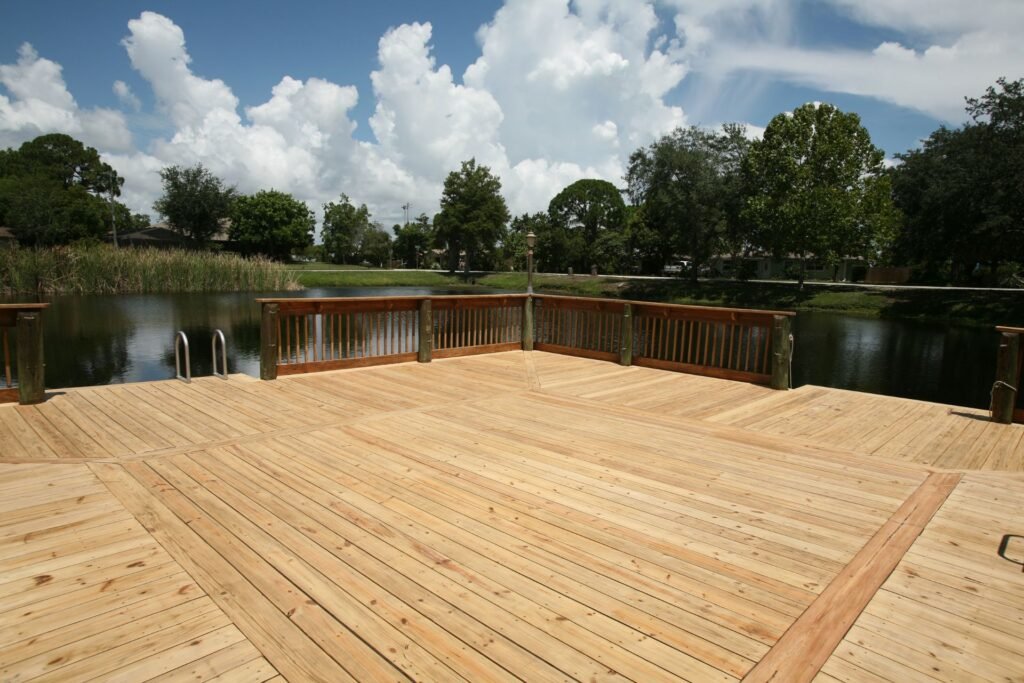
Benefits Of Concrete Slab Floors In NZ Homes
Concrete slab floors have become a popular choice for New Zealand homes, offering several practical and long-term benefits that suit the country’s unique environment. Below, we’ll explore why concrete slab floors are an excellent option, emphasizing key advantages specific to NZ homes, with real-world examples that highlight how they perform under local conditions.
Durability and Longevity
New Zealand’s climate, which includes wet winters, high humidity, and a risk of earthquakes, requires building materials that can stand the test of time. Concrete slab floors are well-known for their exceptional durability, able to withstand these harsh conditions better than many other materials. In seismic zones, like much of New Zealand, concrete’s structural integrity helps it perform well during earthquakes. It can resist cracking and shifting, providing homeowners with a reliable foundation that lasts decades.
Moreover, concrete is highly resistant to water damage. In areas like Auckland or Wellington, where heavy rain and high moisture levels are common, concrete slab floors can prevent issues such as rot, mold, or water ingress. This makes them an ideal choice for homes in coastal or high-rainfall areas.
Energy Efficiency
One of the most significant benefits of concrete slab floors in New Zealand homes is their energy efficiency. Concrete acts as a thermal mass, meaning it absorbs heat from the sun during the day and slowly releases it at night, helping to keep homes warmer in winter and cooler in summer. This natural heat retention is particularly beneficial in sunny areas like Christchurch or Hamilton, where daytime warmth can be harnessed to reduce heating costs.
For even greater energy efficiency, many New Zealand homeowners pair concrete slab floors with underfloor heating systems. Underfloor heating, which is common in new builds, works seamlessly with concrete’s thermal mass properties. This combination provides consistent warmth and helps reduce energy consumption, making homes more eco-friendly and cost-effective to run. In a country where electricity costs can be high, this can lead to significant savings over time.
Low Maintenance
Another major advantage of concrete slab floors is their low maintenance requirements, especially when compared to timber or other flooring materials. Timber floors, for example, can warp or scratch over time, particularly in humid environments like those found in parts of New Zealand. Concrete, on the other hand, is highly resistant to wear and tear, even in high-traffic areas of the home.
Concrete floors can be easily cleaned with simple sweeping and mopping, making them an excellent option for busy families or those who prefer low-maintenance living. They don’t require regular polishing or resealing, unlike some other flooring types, and are highly resistant to stains, especially when properly sealed. This ease of upkeep is especially appreciated in homes with pets or young children.
Design Flexibility
Contrary to common belief, concrete slab floors aren’t just functional; they can also be highly stylish. In New Zealand, many homeowners choose to customize their concrete floors to suit their design preferences. Concrete can be stamped, polished, or painted, allowing for a wide range of textures, colors, and finishes.
For example, polished concrete floors have become a popular choice for modern homes in urban areas like Auckland, providing a sleek and contemporary look. Meanwhile, stamped concrete can mimic the appearance of more expensive materials like stone or tiles, offering homeowners a cost-effective way to achieve a high-end design aesthetic. Whether you prefer a minimalist, industrial look or a more intricate pattern, concrete floors offer nearly endless design possibilities.
Pest Resistance
New Zealand’s natural environment is home to a variety of pests that can cause significant damage to homes, particularly wooden structures. Termites and borers, for instance, are common in some parts of the country and can wreak havoc on timber flooring. Fortunately, concrete slab floors offer a natural defense against these pests.
Concrete is not susceptible to termite or borer damage, providing homeowners with peace of mind that their flooring will remain structurally sound, even in areas prone to infestations. In rural or coastal areas, where pests are more prevalent, this can be a particularly valuable advantage. For example, homeowners in the Northland region, where pest activity is high, often turn to concrete slab floors as a durable, pest-resistant solution.
Concrete slab floors provide a wide range of benefits for New Zealand homes, from their durability and energy efficiency to their low maintenance needs and design flexibility. Additionally, their ability to resist pests makes them an even more attractive option for Kiwi homeowners. Whether you’re building a new home or renovating an existing one, concrete slab floors are a smart, sustainable choice that can add value and comfort to your property for years to come.
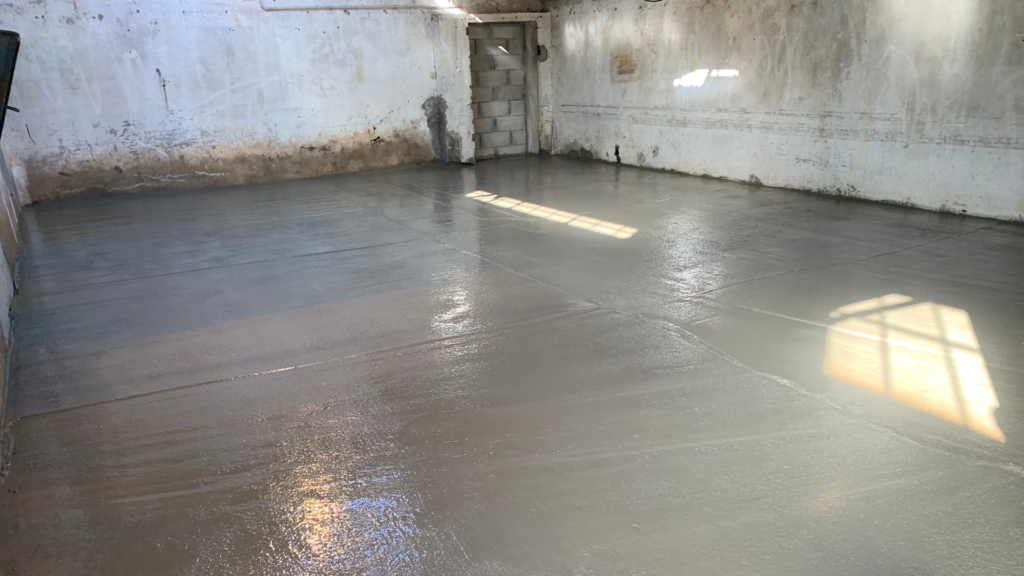
Benefits Of Timber Floors In NZ Homes
Timber flooring continues to be a popular choice in many New Zealand homes, and for good reason. The natural charm of wood, combined with its practical advantages, makes it a standout option for both new builds and renovations. Let’s explore why timber floors are such a smart investment for Kiwi homeowners, providing both emotional and functional benefits.
1. Aesthetic Appeal
One of the most compelling reasons to choose timber flooring is its timeless beauty. Timber brings a warmth and natural elegance that complements a wide variety of home designs, from classic villas to modern minimalist homes. The rich textures and grains of wood enhance the overall aesthetic, making spaces feel more inviting. In New Zealand, where traditional and rustic home designs are often cherished, timber floors fit seamlessly, adding to the charm and authenticity of the home. Whether you prefer the deep tones of rimu or the lighter shades of kahikatea, there’s a timber style to suit every taste.
2. Comfort and Warmth
Beyond its stunning appearance, timber flooring offers incredible comfort underfoot. Unlike harder surfaces like tile or concrete, wood has a slight give, which makes it more forgiving to walk on. Its natural insulating properties also help maintain a consistent indoor temperature, contributing to the coziness of a home. In the cooler months, timber floors retain heat better than many other materials, helping to keep rooms warm and inviting. The feeling of walking on natural wood, especially barefoot, adds a tangible sense of comfort that is hard to replicate with synthetic flooring options.
3. Sustainability
New Zealand is a country that prides itself on sustainability and eco-friendly living, and timber flooring aligns perfectly with these values. When sourced responsibly, timber is a renewable resource, making it a sustainable choice for environmentally conscious homeowners. Many timber floors in NZ are made from locally sourced wood, reducing the carbon footprint associated with long-distance transportation. Additionally, wood is biodegradable and has a much lower environmental impact compared to materials like vinyl or carpet, which are often made from petrochemicals. Choosing timber floors is not just a style statement; it’s a commitment to a greener future.
4. Versatility in Design
One of the standout features of timber flooring is its versatility. There are numerous types of wood to choose from, each offering different colors, grains, and finishes. Whether you’re looking for a polished, high-gloss finish for a contemporary look or a more rustic, matte finish for a country-style home, timber can be tailored to suit your aesthetic. Native New Zealand timbers, such as rimu, totara, and kauri, provide unique grains and textures that set them apart from imported options. Additionally, timber can be stained, painted, or left natural, offering a range of customization options to match your specific design vision.
5. Easier to Renovate
Timber floors are not only beautiful and versatile but also practical when it comes to maintenance and renovation. Over time, floors can show signs of wear, especially in high-traffic areas. Unlike other flooring materials, timber can be sanded down and refinished to look brand new. This flexibility is a huge advantage for homeowners who want to refresh their space without the need for a full flooring replacement. Timber’s longevity makes it a cost-effective choice, as it can last for decades with proper care. In contrast, materials like carpet or vinyl often need to be entirely replaced after a few years of use.
Timber flooring offers a wealth of benefits for New Zealand homes, from its natural aesthetic appeal to its comfort, sustainability, and versatility. Whether you’re renovating an old villa or building a new modern home, timber floors provide an enduring beauty that aligns with New Zealand’s love for nature and eco-conscious living. With the added advantage of being easy to renovate and maintain, timber is a smart and stylish investment that enhances both the emotional and functional appeal of any home.
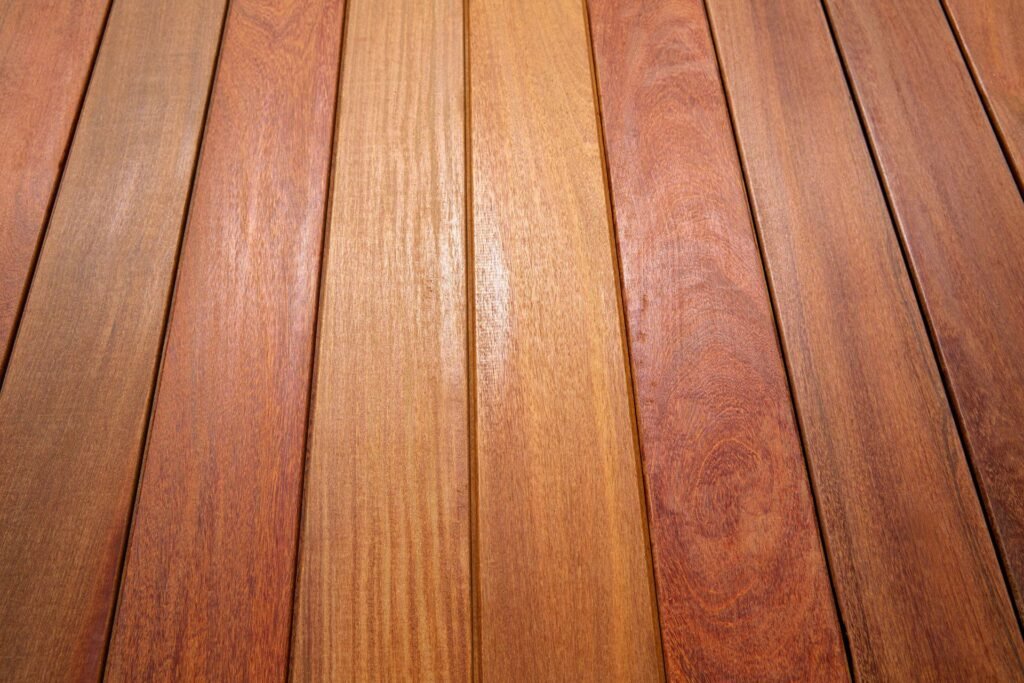
Drawbacks Of Concrete Slab Floors In NZ
Concrete slab floors are a popular choice in New Zealand, known for their durability and strength. However, like any building material, they come with certain drawbacks that homeowners should consider. It’s important to weigh these factors carefully, especially in the unique climate conditions across the country, before making a final decision. Here, we’ll explore some of the key challenges associated with concrete slab floors, particularly in the context of New Zealand homes.
1. Cold Underfoot
Concrete floors are often cold to the touch, which can be a significant drawback in cooler regions of New Zealand, especially in the South Island. While concrete is excellent at retaining heat when paired with underfloor heating systems, it can feel uncomfortable in homes without these enhancements. In areas like Queenstown or Invercargill, where winters can be harsh, concrete slabs can exacerbate the chill if not properly insulated. This makes it essential for homeowners to consider additional heating solutions, which can increase the overall cost of using concrete slab floors.
2. Higher Initial Cost
Compared to other flooring options, such as timber, installing concrete slab floors can be more expensive upfront. The initial costs stem from the materials, labor, and additional preparation needed to lay a concrete slab properly. In some parts of New Zealand, especially rural regions or areas where timber is more readily available, this cost difference can be even more pronounced. While concrete slabs offer longevity and require less maintenance over time, the higher initial investment can be a deterrent for budget-conscious homeowners.
3. Hard Surface
Concrete is an extremely hard material, which may pose some practical challenges in a home environment. For households with young children or elderly residents, the unforgiving nature of concrete can lead to discomfort or injuries from falls. Additionally, the hardness of the surface can be tough on joints, particularly for those who spend long periods standing or walking on it. This also extends to the potential damage caused to dropped objects—concrete floors are far less forgiving than softer flooring options like timber or carpet, meaning breakable items such as glass or ceramics are more likely to shatter upon impact.
4. Moisture Issues
New Zealand’s climate, particularly in regions with high rainfall like Auckland and Wellington, can contribute to moisture problems in homes with concrete slab floors. If the concrete is not properly sealed during installation, water can seep into the slab, leading to dampness, mold, or even structural damage over time. This is especially true in coastal areas or places prone to flooding. The good news is that modern sealing techniques can prevent these issues, but it does require diligence and often additional expense during the building phase to ensure the slab is correctly protected from moisture infiltration.
While concrete slab floors offer many benefits, including durability and thermal mass, they are not without their downsides. Homeowners in New Zealand must consider factors such as the colder feel underfoot, higher installation costs, the hardness of the surface, and the potential for moisture-related issues. By being aware of these challenges and taking steps to mitigate them, such as using proper insulation or sealing techniques, many of these drawbacks can be addressed, making concrete slabs a viable option for those seeking a long-lasting and sturdy flooring solution.
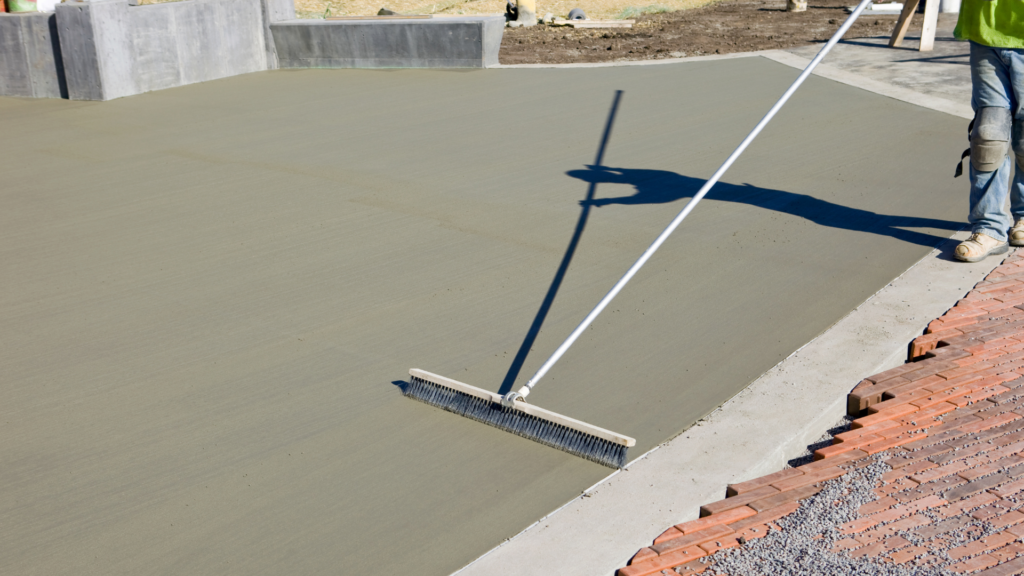
Drawbacks Of Timber Floors In NZ
Timber floors are a popular choice for homes across New Zealand, and they bring a lot of warmth and natural beauty into a space. However, as with any material, there are potential drawbacks to consider before making a decision. It’s important to have a balanced view, acknowledging both the positives and the challenges that timber floors can present in the unique environment of New Zealand.
Vulnerability to Water Damage
One of the key concerns with timber flooring is its susceptibility to water damage. New Zealand’s coastal regions, where high humidity and moisture are common, can pose a particular risk. Timber is a natural material that absorbs moisture, which can lead to swelling, warping, or even rotting if not properly maintained. For those living in areas with higher humidity levels or homes prone to spills, it’s crucial to ensure that timber floors are sealed and protected from water exposure. Additionally, sudden temperature changes can also lead to cracking, making it essential to manage humidity levels indoors.
Higher Maintenance
While timber floors offer an elegant look, they require more upkeep than other flooring options. Regular refinishing is often necessary to maintain their appearance, especially in high-traffic areas. Over time, timber can develop scratches from foot traffic, furniture, or pets. This means homeowners may need to invest in protective finishes and periodically sand and reseal the wood to keep it looking fresh. Additionally, timber floors can be prone to warping if not cared for properly, so consistent attention to maintenance is key to extending the life of these floors.
Pest Concerns
Older homes with timber flooring, especially those located in certain regions of New Zealand, may face issues with wood-boring insects such as termites or borer beetles. These pests can compromise the structural integrity of the timber, leading to potentially costly repairs if left unchecked. Although modern treatments and construction methods reduce the risk, it’s still something to be aware of, especially in older homes or areas known for these pests. Regular inspections and pest control treatments are necessary to prevent infestations that could damage the flooring over time.
Noise
Another drawback of timber floors is the noise factor. Unlike carpet or vinyl, timber floors can amplify sound, making footsteps, pet nails, or even shifting furniture quite noticeable. For homeowners with pets or children, this can lead to more noise throughout the home. Walking on timber floors with hard shoes can also create loud clacking sounds, which some might find disruptive. To mitigate this, area rugs and soft footwear can help dampen sound and create a quieter environment.
Timber floors offer timeless beauty and durability, but it’s essential to weigh their potential drawbacks carefully. Whether it’s susceptibility to moisture, the need for ongoing maintenance, concerns about pests, or noise, understanding these challenges can help you make an informed decision. For many homeowners in New Zealand, timber floors remain a worthwhile investment, but they do require care and attention to ensure they stand the test of time.

Environmental Impact: Concrete Vs Timber In NZ
As sustainability becomes a growing concern for New Zealand homeowners, choosing between concrete and timber for construction materials involves carefully weighing the environmental impact of both. The debate about which material is more eco-friendly often boils down to the energy required for production, transportation, recyclability, and renewability.
In this section, we’ll explore these factors with a focus on the carbon footprint of concrete and the renewable nature of timber, providing New Zealanders with the insights needed to make more eco-conscious building choices.
Concrete’s Carbon Footprint
Concrete is one of the most widely used building materials in the world, but it comes with a significant environmental cost. The production of cement, a key ingredient in concrete, is energy-intensive and releases large quantities of carbon dioxide (CO2) into the atmosphere. In fact, the cement industry is responsible for approximately 8% of global CO2 emissions.
For New Zealand homeowners, this means that opting for concrete construction can contribute significantly to your home’s overall carbon footprint. Additionally, the energy and resources required to transport concrete from manufacturing plants to building sites further add to its environmental cost. Given New Zealand’s geography, transportation distances can be substantial, particularly in rural or isolated areas, increasing the carbon output associated with construction projects.
Timber as a Renewable Resource
Timber, on the other hand, presents a more eco-friendly option, especially when sourced from sustainable forestry practices. New Zealand is home to a thriving timber industry, and many local suppliers adhere to Forest Stewardship Council (FSC) standards, ensuring that trees are harvested in a way that promotes forest health and biodiversity. When managed responsibly, forests act as carbon sinks, absorbing CO2 from the atmosphere and mitigating climate change.
Timber is a renewable resource, and with New Zealand’s commitment to replanting and sustainable forest management, timber remains a viable option for those looking to reduce their environmental impact. By choosing timber from certified sustainable sources, homeowners can ensure that their building materials are contributing to the long-term health of the environment, not just meeting the immediate needs of their project.
Recyclability
While both concrete and timber have their advantages in terms of recyclability, there are key differences that homeowners should consider. Concrete can be broken down and recycled for use in other construction projects, such as road bases or aggregate for new concrete. However, this process requires significant energy and resources, and the recycled material may not always meet the same structural standards as newly produced concrete.
In contrast, timber is highly versatile in its post-use phase. It can be repurposed into furniture, used as reclaimed wood in new construction, or even composted, returning organic matter to the soil. Timber’s ability to be reused or biodegrade naturally makes it an appealing choice for eco-conscious homeowners who prioritize materials that minimize waste.
When comparing the environmental impact of concrete and timber in New Zealand, timber emerges as the more sustainable option, particularly when sourced from responsibly managed forests. Its renewable nature, lower carbon footprint during production, and ease of repurposing or composting make it a greener choice for homeowners looking to build in harmony with the environment.
However, concrete’s durability and recyclability also make it a viable option in certain contexts, especially when energy efficiency and long-term structural integrity are top priorities. Ultimately, the best material choice depends on the specific needs of your project, as well as your personal commitment to sustainability. By considering these factors, New Zealand homeowners can make informed decisions that contribute to a more sustainable future.

Cost Comparison: Concrete Slab Vs Timber Floor In NZ
When building or renovating a home in New Zealand, one of the biggest decisions homeowners face is choosing between a concrete slab and timber flooring. Both options come with their own sets of benefits, costs, and long-term considerations, which can significantly impact the budget and value of your home. This detailed cost comparison aims to help you make an informed decision by breaking down both the immediate and long-term costs associated with each option.
Installation Costs: Concrete Slab vs. Timber Floor
Initial installation costs play a pivotal role when deciding on the flooring type. In the New Zealand market, costs can vary depending on factors like region, builder experience, and material availability. Here’s a closer look at how concrete slabs and timber floors compare in terms of upfront expenses:
Concrete Slab Installation Costs
Concrete slabs tend to have higher initial material costs. Concrete is a heavy, durable material that requires skilled labor for proper installation. On average, installing a concrete slab can cost anywhere between $150 to $200 per square meter. This includes the cost of concrete, reinforcement materials, and labor. However, depending on the site conditions, such as the need for excavation or leveling, these costs can increase.
Timber Floor Installation Costs
Timber floors, while aesthetically pleasing, often have lower initial material costs compared to concrete slabs, but the installation process can be more labor-intensive. Depending on the type of wood (e.g., pine, oak, or more exotic woods), installation costs range between $100 to $160 per square meter. Hardwood or engineered timber floors generally cost more, but softwoods can offer a more budget-friendly alternative. Keep in mind, the labor cost might increase due to the precise installation techniques required, especially for high-end timber options.
While timber flooring might be cheaper in terms of materials, the overall installation cost may level out with concrete slabs when considering labor.
Long-Term Maintenance Costs
It’s not just about the upfront cost; you also need to consider the long-term maintenance when comparing concrete slabs and timber flooring. Over the lifespan of your home, maintenance expenses can significantly impact your budget.
Concrete Slab Maintenance
One of the key advantages of concrete slabs is their low-maintenance nature. Once installed, concrete is highly durable and resistant to damage. It doesn’t warp, rot, or suffer from termite infestations. Over the long term, maintenance costs for concrete are minimal—possibly limited to occasional sealing or cleaning. Its resilience against moisture also makes it ideal for homes in wetter regions of New Zealand. Concrete flooring may require repairs only in rare cases of cracking or surface wear, but these costs are generally low and infrequent.
Timber Floor Maintenance
Timber floors, on the other hand, require more ongoing care. Wood can warp, swell, or shrink depending on humidity levels, and it may also be vulnerable to termites or other pests. Regular sanding, polishing, and refinishing are often necessary to maintain its appearance and longevity. Depending on the type of timber and the climate in your region, maintenance could be required every 5 to 10 years, which adds to the long-term cost. Additionally, timber floors may need repairs if planks become loose or damaged, further adding to the upkeep.
While timber offers a classic and warm aesthetic, concrete’s low-maintenance appeal makes it a more cost-effective option in the long run, particularly if you’re looking to minimize upkeep.
Resale Value in New Zealand’s Real Estate Market
Your choice of flooring can also influence the resale value of your home. In New Zealand’s highly competitive real estate market, buyers often look for homes with modern and durable finishes.
Concrete Slab and Resale Value
Concrete floors, when polished or finished in a modern way, can appeal to a wide range of buyers. The industrial and minimalist trend has grown in popularity in recent years, and polished concrete floors are seen as stylish, durable, and easy to maintain. Homes with concrete slabs are often perceived as more energy-efficient due to concrete’s thermal mass, which helps regulate indoor temperatures. This energy efficiency can be a selling point in a market where sustainability is becoming increasingly important. As a result, homes with polished concrete slabs may fetch a higher resale value due to their modern aesthetic and low maintenance needs.
Timber Floor and Resale Value
Timber floors, especially high-quality hardwood, are often considered a premium feature. Many buyers appreciate the natural, warm look that timber brings to a home. In fact, homes with well-maintained timber floors can sometimes achieve a higher resale price, particularly if the timber used is of high quality or rare. However, potential buyers may also factor in the future costs of maintaining and repairing timber floors, which could affect their willingness to pay top dollar.
Ultimately, both flooring types can enhance a home’s resale value, but the decision will depend on the tastes of the market at the time of sale and the overall condition of the flooring.

Concrete Slab Vs Timber Floor For Different NZ Home Styles
When building or renovating a home in New Zealand, one of the most important decisions is choosing the right flooring. Whether you’re designing a modern urban retreat, restoring a traditional villa, or constructing a coastal getaway, the choice between a concrete slab and a timber floor can dramatically impact the style, functionality, and feel of your home. Below, we explore which flooring option might best suit different types of NZ homes.
Modern Homes: Concrete Slabs for Sleek, Minimalist Designs
For modern homes that often embrace clean lines, open spaces, and minimalistic aesthetics, concrete slabs are an excellent choice. This flooring option aligns with the contemporary look that defines many modern New Zealand houses. Concrete’s smooth finish provides a sleek, seamless appearance, which complements large glass windows, open-plan living areas, and neutral color schemes common in modern architecture.
Aside from aesthetics, concrete slabs offer practical benefits for modern homes. They are highly durable, making them ideal for busy households or homes with high foot traffic. Additionally, concrete floors can be polished or stained in various finishes, allowing homeowners to customize the look while maintaining a minimalistic style. Another notable benefit is their energy efficiency. Concrete slabs retain heat from sunlight during the day and release it slowly throughout the night, which can help reduce heating costs in colder months.
Traditional Homes: Timber Floors for Character-Filled Villas or Bungalows
For those renovating or building traditional-style homes such as villas, bungalows, or heritage properties, timber floors are the go-to option. Timber floors exude warmth, charm, and authenticity, making them a perfect match for homes that prioritize character and history.
New Zealand’s older homes often feature beautiful timber flooring, and homeowners looking to restore these properties typically choose to maintain this classic material. Timber floors can be sanded and refinished over time, adding longevity and allowing owners to retain the original charm of their home while giving it a fresh update. The natural grain and texture of timber also lend a sense of craftsmanship and individuality that concrete cannot replicate.
Beyond aesthetics, timber floors have practical benefits for traditional homes. They are naturally insulating, which is ideal for NZ’s cooler climates, providing a warm and comfortable surface to walk on. In terms of maintenance, timber requires a bit more care than concrete but can last generations with the right treatment. For those seeking to preserve or recreate the heritage feel of traditional New Zealand homes, timber flooring remains the classic and often preferred choice.
Rural and Coastal Homes: Balancing Aesthetic and Climate with Both Materials
When it comes to rural and coastal homes, the decision between concrete slabs and timber floors can be influenced by both climate and aesthetic preferences. Coastal homes, for instance, are often exposed to high levels of moisture and salt air, which can impact material durability.
Concrete slabs can be an excellent choice for coastal homes because they resist moisture, are termite-resistant, and require minimal upkeep. They also complement the often minimalist, relaxed aesthetic associated with beach houses, creating a cool, casual look that’s perfect for open, breezy living spaces. Moreover, concrete floors are easy to clean, which is an added advantage for homes that often deal with sand and salt.
On the other hand, timber floors may appeal to those seeking a rustic or natural look, which blends well with both rural and coastal environments. Timber offers warmth and a homely feel, making it particularly suited for rural homes that aim for a cozy, welcoming atmosphere. However, homeowners need to consider the maintenance involved in keeping timber floors in good condition, especially in regions with fluctuating humidity or proximity to saltwater.
In rural areas where heating can be a concern, timber flooring, with its natural insulation, may be the better choice. For homes aiming to merge seamlessly with their natural surroundings, timber floors can provide that desired connection to the outdoors.
Choosing between a concrete slab and a timber floor for your New Zealand home ultimately depends on your home style, climate, and personal preferences. For modern homes with minimalist designs, concrete slabs offer a sleek and practical solution. In contrast, timber floors are the preferred choice for traditional homes, offering warmth and character. Meanwhile, rural and coastal homes benefit from considering both options, balancing durability, aesthetic, and climate needs.
By understanding the unique features of each flooring type, homeowners can make an informed decision that complements their home’s design and lifestyle. Whether you’re aiming for sleek modernity or rustic charm, there’s a flooring option that will suit your NZ home perfectly.

FAQs: About Concrete Slab Vs Timber Floor NZ
What are the main benefits of concrete slab floors in NZ homes?
Concrete slab floors are highly durable, require minimal maintenance, and provide excellent thermal mass, which helps retain heat. They are also pest-resistant and less likely to be damaged by moisture, making them ideal for NZ’s varying climates.
What are the advantages of timber floors in New Zealand homes?
Timber floors offer a warm, natural aesthetic that suits many NZ homes, especially traditional or rustic designs. They are comfortable underfoot, have natural insulating properties, and can be refinished to maintain their appearance over time. Timber is also a renewable and sustainable resource when sourced responsibly.
Which flooring option is better for energy efficiency?
Concrete slabs are typically more energy-efficient because they absorb and retain heat from sunlight, making them especially useful in homes designed with passive solar heating. However, timber floors can also provide good insulation if paired with proper underlay.
Are timber floors prone to moisture damage in NZ’s climate?
Yes, timber floors are more susceptible to moisture, particularly in high-humidity or coastal areas of NZ. However, with proper sealing and maintenance, timber can still perform well in these conditions.
Is a concrete slab more expensive than timber flooring in New Zealand?
The initial cost of installing a concrete slab is generally higher than timber flooring, due to labor and material costs. However, concrete’s durability and low maintenance could lead to lower long-term costs, while timber may require refinishing or repairs over time.
Which flooring option is better for earthquake-prone areas in NZ?
Concrete slabs are generally considered more stable and resilient in earthquake-prone areas due to their solid structure. However, timber floors with appropriate framing can also perform well if designed for seismic activity.
Can I install underfloor heating with timber floors in NZ?
Yes, underfloor heating can be installed with timber floors, though it’s essential to ensure the system is compatible with the type of timber being used. Concrete slabs are particularly well-suited to underfloor heating as they efficiently retain and radiate heat.
How does the environmental impact of concrete compare to timber?
Timber is generally considered more eco-friendly as it is a renewable resource, especially when sourced from sustainably managed forests. Concrete production has a higher carbon footprint due to the energy-intensive processes involved in manufacturing cement, although it can be recycled.
Which flooring option is more suitable for NZ’s coastal homes?
Timber floors may not be ideal in coastal areas due to high moisture and humidity levels, which can lead to warping or damage. Concrete slabs are more resistant to these conditions, making them a better option for homes near the coast.
Which flooring type offers better resale value in New Zealand?
Both options can add value to your home, depending on the style and quality. Concrete floors tend to appeal to those looking for modern, low-maintenance homes, while timber floors may attract buyers who appreciate natural materials and traditional aesthetics. The resale value will depend on the overall design and location of the property.
Conclusion
Choosing the best flooring option for your New Zealand home ultimately depends on your unique lifestyle, personal preferences, and budget. Timber flooring offers warmth, natural beauty, and a classic appeal, making it ideal for those who prioritize aesthetics and a cozy feel. On the other hand, concrete flooring is durable, low-maintenance, and perfect for modern, industrial-style homes or areas prone to high foot traffic. Both options have their distinct advantages, but your choice should align with how you live, the look you want to achieve, and the long-term value you’re seeking. For further guidance, it’s always helpful to consult local NZ builders or flooring specialists who understand the specific requirements of homes in the area. Additionally, visiting showrooms can provide a hands-on experience, helping you make a well-informed decision that suits your home and lifestyle.
About the Author:
Mike Veail is a recognized digital marketing expert with over 6 years of experience in helping tradespeople and small businesses thrive online. A former quantity surveyor, Mike combines deep industry knowledge with hands-on expertise in SEO and Google Ads. His marketing strategies are tailored to the specific needs of the trades sector, helping businesses increase visibility and generate more leads through proven, ethical methods.
Mike has successfully partnered with numerous companies, establishing a track record of delivering measurable results. His work has been featured across various platforms that showcase his expertise in lead generation and online marketing for the trades sector.
Learn more about Mike's experience and services at https://theleadguy.online or follow him on social media:
